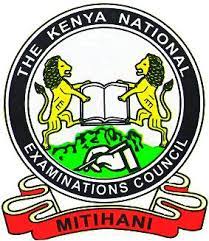
SECTION A (32 marks)
Answer ALL the questions in this section in the spaces provided.
1. Mary’s salary is Ksh. 180,(XX) per annum. Her salary’ increases by 10% annually. Calculate the total amount she wi? have earned in six years. (3 marks)
2. Given the following matrix A
Determine A ‘ (3 marks)
3. Outline three disadvantages of using observation as a method of data collection. (3 marks)
4. State four different bases that may be used to classify data. (4 marks)
5. John would like to have Ksh. 300.(MM) in eight years’ time. Determine the amount of money that
he should invest now if the rate of interest is 12% per annum. (4 marks)
6. Distinguish between the terms measure of dispersion and measure of central tendency. (2 marks)
7. The following statements relates to set theory.
(i) The order of listing the elements of a set is immaterial.
(ii) The empty set is a subset of every set.
(iii) Sets A and B are a disjoint if the union of A and B is an empty set.
Indicate whether each of the statement above is true or false.
8. Explain each of the following terms as used in network analysis
(i) event;
(ii) activity;
(iii) project.
(3 marks)
9. The following data was extracted from the books of Soi Traders for the first six months of the year 2010.

Using Chain-base method, calculate the quantity index number for each month. (3 marks)
10. State the four components of a time series. (4 marks)
SECTION B (68 marks)
Answer any FOUR questions from this section in the spaces provided in this question paper.
II. (a) Distinguish between each of the following terms as used in matrices, using an example in each case.
(i) Singular matrix and non-singular matrix;
(ii) Transpose of a matrix and a diagonal matrix. (8 marks)
(b) The Human Resource Manager of Zembe Limited rotated ten employees between two departments A and B in the month of July 2013. The following information shows the rankings given to the ten employees based on their performance by the two heads of departments.

(i) Calculate the rank correlation co-efficient of the employees.
(ii) Comment on the result in (i) above. (9 marks)
12. (a) Outline four advantages of using sampling method in data collection. (8 marks)
(b) A firm intends to borrow Ksh. I 000 000 to be invested in either Project 1 or Project 2.
The annual interest payable is 15%. The following are the expected cash Hows for the two projects.

(i) Calculate the profitability Index (PI) of each project.
(ii) Advise the management of the firm on the project to invest in based on (i) above. (9 marks)
Explain four limitations of using decision trees in making decisions in an organization.
(8 marks)
A firm conducted a survey on the demand of one of its products and established the demand function to be
q = 50()p + 12,500 where q is the number of units demanded at price p.
The estimated fixed cost to produce one unit of the product was Ksh. 6,000 while the variable cost was Ksh. 5 per unit. Calculate;
(i) quantity that would be produced to maximize profits.
(ii) selling price per unit that would maximize profits. (9 marks)
Explain four advantages of using graphs in the presentation of data. (X marks)
Three audit firms x, y and z recruit employees directly from the university annually. In the year 2009, a total of 213 university students applied to each of the three firms.
27 students received offers from exactly two firms.
63 students received offers from firm x.
62 students received offers from firm y.
35 students received offers only from firm x.
60 students received offers only from firm z.
29 students received offers only from firm y.
15 students received offers from firms y and z but not x.
(i) present the above data in a venn diagram.
(ii) determine the number of students who;
I. did not receive any offers;
II. received offers from firm z;
III. received offers from at most two firms.
Explain the significance of time series analysis in business decision-making. (8 marks)
A group of employees decided to raise Ksh. 480,000 to start a business. Four of the members pulled out before any contribution was made and each of those who remained had to pay an additional Ksh. 20,000 to meet the deficit. Determine the initial number of
members in the group. (9 marks)
Outline four factors that should be considered in the computation of index numbers. (8 marks)
The following data relates to the distribution of wages of thirty four employees in a company.

